Glass Blocks
Glass brick, also known as glass block, is an architectural element made from glass. The appearance of glass blocks can vary in colour, size, texture and form
Glass Blocks have grown in popularity and are now available for many applications, such as shower screens, window features, breakfast bars and even ornamental features in the garden. With the range of designs and colours now available, you are limited only by your imagination.
Appearance:
The texture and colour of glass blocks can vary in order to provide a range of transparency. Patterns can be pressed onto either the inner void or the outside surface of the glass when it is cooling in order to provide differing effects. Glazes or inserts may also be added in order to create a desired decorative effect.

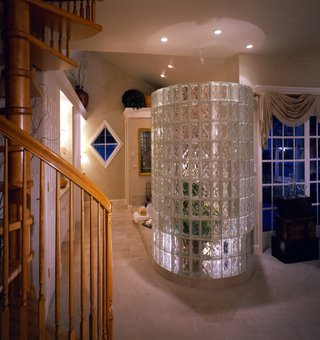
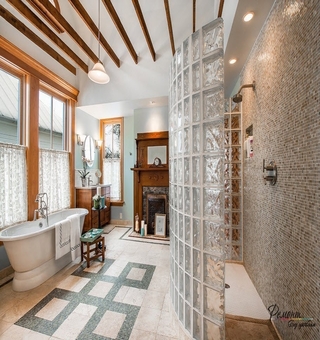
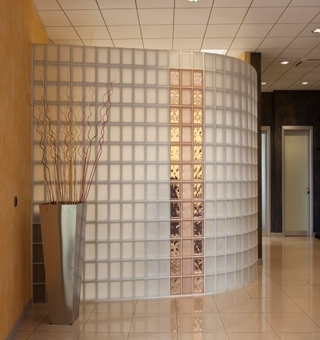
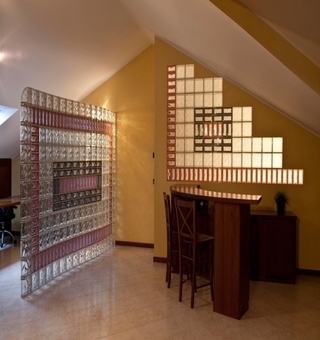

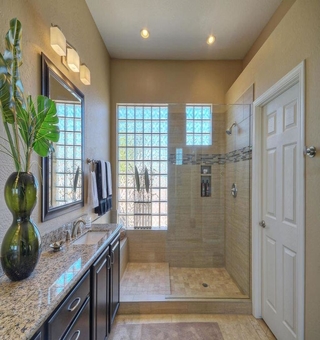

Applications:
Wall Blocks
Glass blocks can allow light to pass and serve as a decorative addition to any architectural structure, but hollow glass blocks are non-load-bearing unless stated otherwise. Hollow glass wall blocks are manufactured as two separate halves and, whilst the glass is still molten, the two pieces are pressed together and annealed. The resulting glass blocks will have a partial vacuum at the hollow center. Due to the hollow center, wall glass blocks do not have the load-bearing capacity of masonry bricks and are utilized for curtain walls. Glass block walls are constrained based on the framing in which they are set. If a masonry or steel frame exists, the maximum area of the wall can be 144 square feet (13.4 m2), whereas the maximum area without a frame is 100 square feet
Skylights and Sidewalks
Glass blocks used in flooring are normally manufactured as a single solid piece, or as a hollow glass block with thicker side walls than the standard wall blocks. These blocks are normally cast into a reinforced concrete grid work or set into a metal frame, allowing multiple units to be combined to span over openings in basements and roofs to create skylights. Glass wall blocks should not be used in flooring applications because the way in which they are manufactured does not allow them to bear load.
Construction Methods to be used
Glass wall blocks are fixed together to form complete walls by several methods – the most common method of construction is to bed the blocks together in a cement-based mortar with reinforced rods of steel placed within the mortar as recommended by the project architect or block manufacturer.
Other methods of construction include several proprietary systems whereby the mortar is replaced by timber or PVC extrusions.
Bullet and vandal resistance
Bullet and vandal resistant blocks are generally solid glass or have very thick side walls similar to pavement blocks.
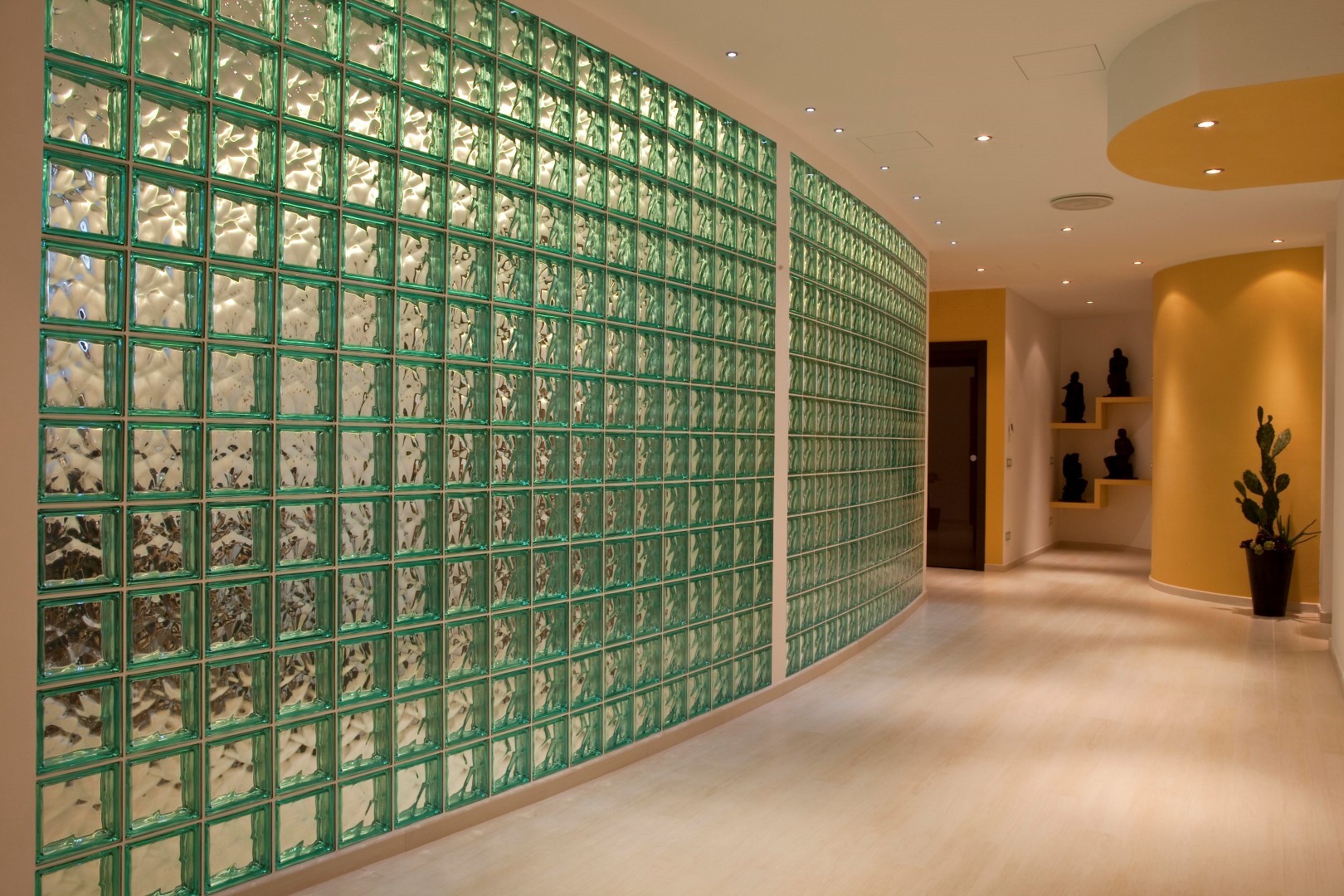
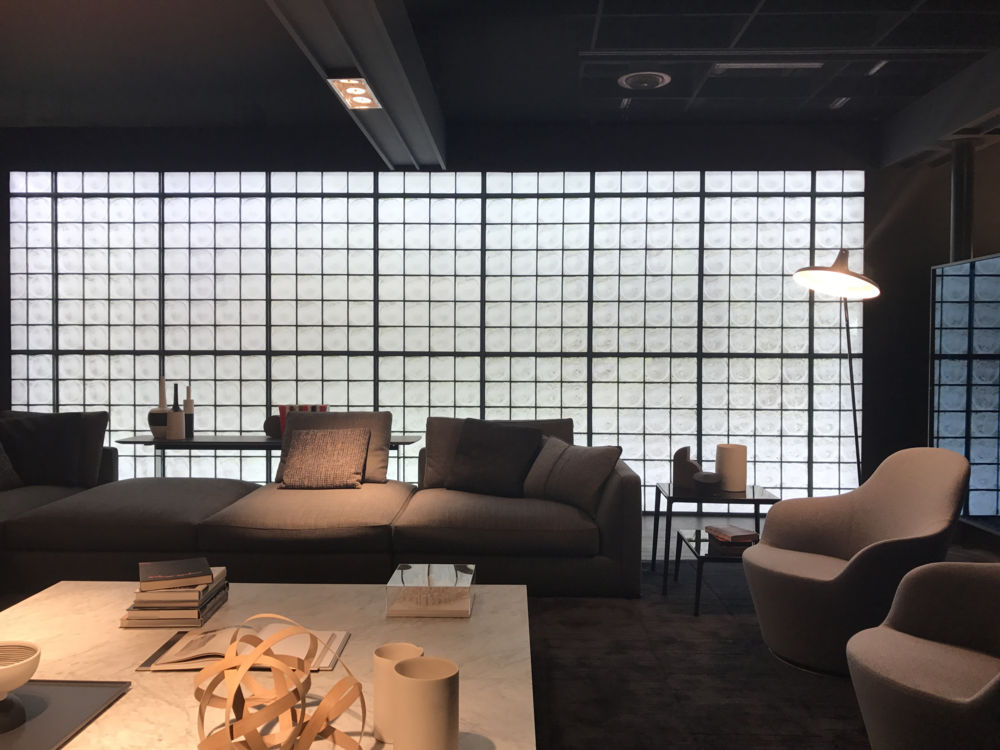
Types
Fire resistant
Fire resistance of varying degrees can be achieved by several methods. Standard production hollow wall block will offer little fire resistance; however, resistance is improved by utilising specially produced hollow blocks with thicker sidewalls, or the inclusion of a special layer of fire resisting material between the two halves of the block during manufacture.
Gas insulated
A recent innovation in the manufacture of glass blocks is the inclusion of argon gas within the hollow center of glass wall blocks. This advancement in production technique has resulted in a glass block which is able to offer significantly improved thermal insulation properties.
Coloured
Some hollow glass wall blocks are available in coloured variants. These coloured variants fall into two categories; those that are manufactured with coloured glass which are UV stable and can be used in the same locations as standard clear glass blocks. The other method by which coloured glass blocks are achieved is to inject a coloured material, dye or transparent paint into the hollow centre of the blocks to form a permanent coating. This method of producing coloured blocks enables vibrant colours to be achieved which are not possible with coloured glass.



